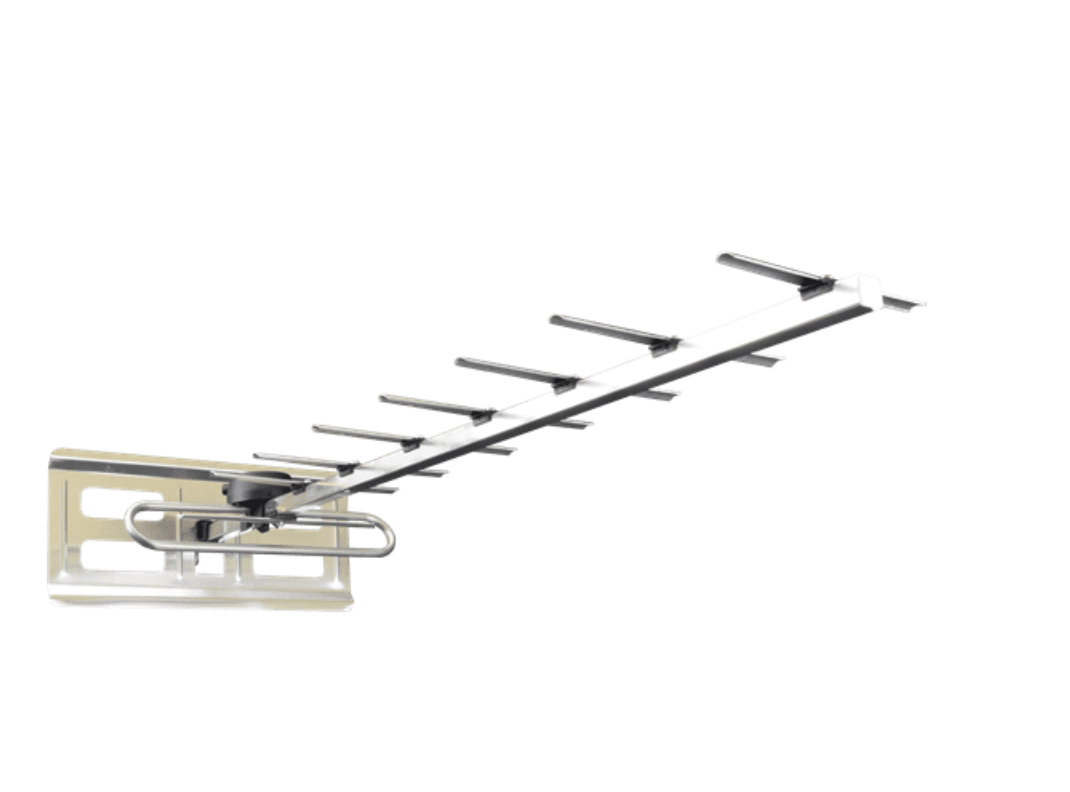Understanding the different types of TV aerial

There are a number of different types of TV aerials available, all designed to receive signals in slightly different environments and locations and best for specific uses. In this post, we’ll identify some common types of TV aerials, and explain what they are and where they’re best suited. Yagi TV aerials are the most common type of TV aerial in the UK. They’re directional aerials, which means that they need to be manually pointed towards the transmitter to receive a signal. Yagi aerials tend to be cheaper and easier to install than other types of TV aerials and are best suited in areas with moderate to strong TV signals and a clear line of sight to the broadcasting tower. For example, in suburban and urban areas, a Yagi aerial is recommended. Log periodic TV aerials tend to be slightly more versatile than Yagi aerials as they’re designed to receive a wider range of frequencies. Similar to Yagi aerials, they are directional and need to be pointed towards the transmitter. Log-periodic aerials are better suited for areas with weaker or scattered signals and multiple broadcasting towers. For example in urban areas, hilly areas or in areas with limited access to broadcasting towers. High-gain TV aerials are specially designed to be used in areas that have a weak signal and these aerials can therefore provide a stronger signal to the TV. One negative to using high gain, is that they can often pick up unwanted interference or noise due to their high level of gain. This can degrade the overall signal quality that is received. This issue can be solved by installing aerial filter aids, as they ensure that only wanted signals are allowed to get through while blocking unwanted ones from getting to your equipment. High-gain aerials may be useful in areas with a very weak signal, or at a large distance from the broadcasting tower. For example, rural areas, areas with obstructions or areas with weak or scattered signals. Billboard TV aerials are directional aerials that tend to be larger and more powerful than other types of TV aerials. Compared to log-periodic, Yagi and high-gain, billboard TV aerials have a higher gain, meaning that they are able to pick up weaker signals from a greater distance. Billboard TV aerials normally have a narrower beamwidth, which means it allows them to focus on a particular direction and reject signals coming from other directions. This is especially useful as it helps to reduce interference and improve quality. As billboard TV aerials are more advanced, they tend to be larger and more expensive compared to the above options, making them impractical for certain uses. Billboard aerials are normally used where there are weak signals and larger distances from broadcasting towers. This could include rural areas, mountainous areas and urban areas where buildings can interfere with signals. In conclusion, understanding the different types of TV aerials available is important to ensure that you receive the best possible signal for your location and requirements. Yagi aerials are the most common and suitable for suburban and urban areas with moderate to strong signals, while log-periodic aerials are more versatile and better suited for weaker or scattered signals in urban areas, hilly areas or areas with limited access to broadcasting towers. High-gain aerials are useful in areas with very weak signals or at a large distance from the broadcasting tower. Billboard aerials are the most advanced and expensive, suitable for areas with weak signals and larger distances from broadcasting towers. Identifying the right group of TV aerial for your location and needs will ensure that you receive a high-quality and reliable signal. Find out what group of TV aerial you need or use our handy tool to see which aerial we’d recommend.Yagi TV aerial
Log-periodic TV aerial
High-gain TV aerial
Billboard TV aerial
Conclusion








 Quick Add
Quick Add